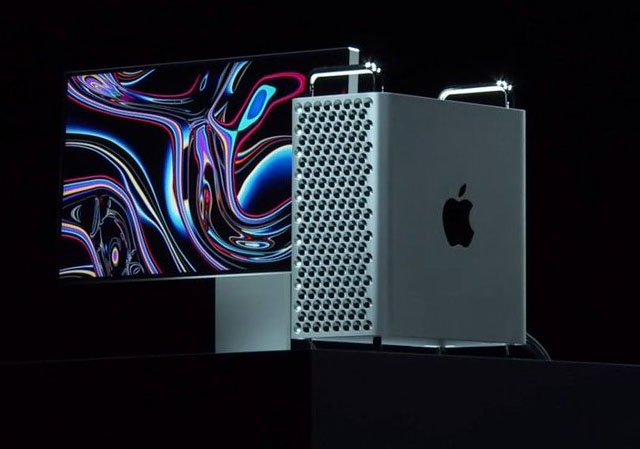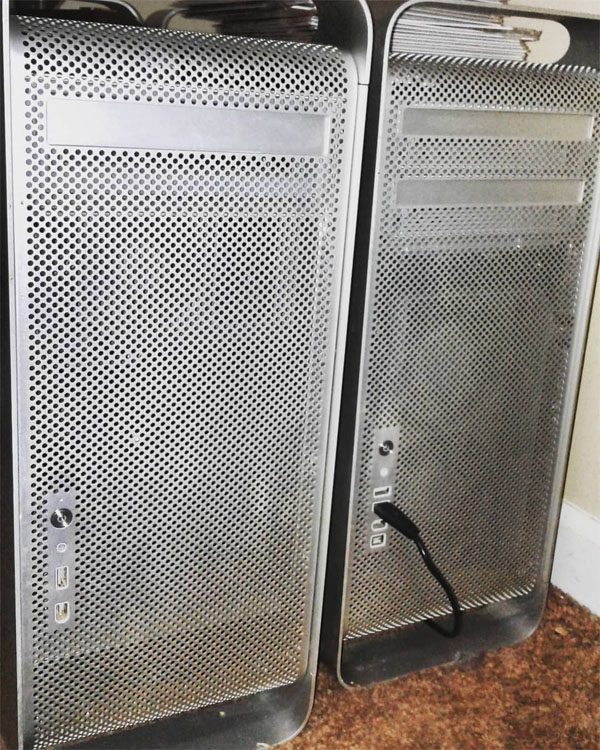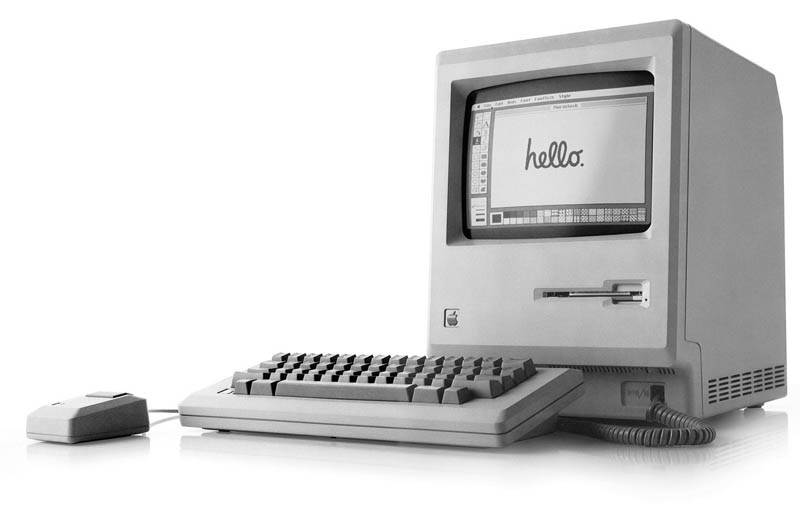It’s been a week since Apple’s WWDC event where, among many other things, they finally announced a new Mac Pro, nearly 6 years after the release of the, in retrospect, maligned “trash can” 2013 system.
I wanted to let a little time pass before I gave my thoughts on the system, not only so I could think about it myself but also see what others were saying, for or against the system, so I’d know what may be worth mentioning outside of what I’d normally want to discuss.
Keep in mind I’m just a hobbyist – I’m not the target demographic for this machine, and I want to discuss it from that perspective. I’m also not a “everything I own has to be cutting edge” kind of person, and as such I feel I come from a somewhat unique place compared to others who may be discussing this machine online.
So, let’s get to it. What are my thoughts on the 2019 “Modular” Mac Pro.

The Tech…
First off, the “Modular” nickname is clearly some buzz term crap which stuck. It caused many, in the typical hype and speculation that everything new on the internet brings, to make renders of what they thought the machine would look like — a stack of Mac Mini like units wired together, or some other “building block” kind of system.
That’s not the case. As can be seen above, the machine is most certainly a pretty straightforward, typical computer (in principle anyway.) It’s built with expansion in mind, and this is where the “modular” aspect actually comes into play. Apple’s idea is to produce “Mac Pro Expansion” or “MPX” modules which will provide some really broad expansion options — so long as modules are actually produced.
The system will still support typical PCI Express expansion options, of course, but the best benefit would, logically, be gained from these MPX cards and the added power and data connections they are given.
The logic board of the system really seems built to toss data around which is kind of what you want when a good chunk of what your system is doing involves, well, tossing data to subsystems like the MPX modules.
I won’t speak on the processor – It’s certainly a beast, and will only be upgraded (we would hope, after all) as the Xeon family continues to evolve. We’re in an era where high core count single processors are becoming an industry wide standard in design and this system shows that in full force.
Memory, though. That’s another story. The fact that this system is apparently rated to top out at 1.5TB of Memory is insane. Consider we’re currently in an era where, for processional systems, 32, 64, or 128GB of memory is rather standard, 1.5 Terrabytes is just something else. This reminds me of the 90’s when 1.5GB of memory was a bunch of space and people’s systems usually had 16, 32, or 64MB of memory. Ah, what a difference 20 years makes.
That being said, the 32GB the system ships with is perfectly usable, but obviously a fraction of what the system is capable of.
Storage, however, is kind of paltry. Then again, given that this can, of course, be upgraded that’s not too terrible. NVMe SSD’s are a working standard now, though, and given that most professional workflows use some form of network attached storage or at least an external directly connected storage solution it really isn’t that big of a deal.
Basically, while it’s not the most powerful machine out there it’s not going to be a slouch and the upgrade paths available make the machines potential quite interesting…
The Design…
The “Classic” Mac Pro systems (the 1,1 to the 5,1) shared the same design as the Power Mac G5, a design nicknamed the “Cheese Grater” due to its resemblance to the culinary device.

This was to allow for high airflow with relatively slow spinning fans to keep the systems quieter than the late model G4 systems were. This worked – the machines are quiet – and gave them a unique appearance.
Well, the new Mac Pro doesn’t change the overall idea, but it is different — as you can see in image at the top of the article and on the Apple website, the holes on this model, compared to the previous ones, are huge! It almost looks absurd, but for the kind of airflow this machine is engineered for it makes sense, and aspects of the design have a resemblance to the cooling from the Power Mac G4 series. It will take some getting used to.
Of course, it led everyone to make the usual cheese grater jokes, which is still happening – even Apple themselves poked fun at it during the keynote, and while it was cute the first time it got old very quickly.
The new handles are an interesting touch – they make it look more like a piece of industrial equipment than a computer and the case shape in conjunction with these handles apparently are to aid in the system being used in a server rack configuration, as well as just lugging the damn thing around if need be. Better than the other handles, as I found out when picking up my G5 last year from the prior owner.
Accessing the innards of the machine is one of those points of elegance for Apple and this design – it opens much the same way the old G4 Cube did, allowing you access to, well, everything! My first thought, in all seriousness, was “great, now I can get the damned dust out of there” as that’s always a concern for me and these kinds of systems. This also makes installing upgrades trivial, which will be a real benefit to most everyone who really tinkers with these machines. As much as we all love them, the Classic Mac Pro design did have some tight spots when trying to install certain upgrades.
So yeah, all in all, physically it’s different, but given how the internals are and what this machine is to be, it makes sense. Certainly unique enough, for better or worse.
Now, we come to the final key factor…
The Price…

This machine is going to be expensive. Not just everyday Macintosh expensive. Not even typical Mac Pro Expensive. We’re talking double what one would expect to be paying for an entry level machine — recall that’s the only real spec which was discussed last week, the entry SKU.
The price in question, if you’ve somehow missed it, is $6,000.
Now, when you adjust for inflation the number seems a little less insane, sure, but it is still higher on a whole than the past decade or so of Mac Pro systems and, honestly, it is as shipped kind of weak. The idea certainly is the potential and it’s something to consider how much the unique motherboard and the MPX slots increase the cost / value of the whole package, but there’s no getting over the fact that a custom built Windows or Hackintosh system could well match or beat many aspects of this machine, especially if purpose built. It still won’t have all the features and capabilities, like the MPX modules (really, that’s kind of the key thing with this machine, I hate to keep bringing it up) and would have its own quirks.
Don’t get me wrong, I’m not trying to say the price is perfectly fine – I’m simply neutral to it. It’s fucking expensive, sure, but again, I’m not a video production studio. I’m not a 3D design warehouse. I’m not a music producer, a high end game developer, or any of this. I’m just one guy who enjoys technology, has a soft spot for the professional grade Macintosh hardware, and likes to write about things. This machine isn’t for me. It’s not for most of us. It’s for those who know they need a Macintosh to do what they want to do the most effectively and want the top end system with the least trouble. Yeah, you can customize a later Mac Pro to rival this thing in many ways, but that takes effort and incurs risks that some may not wish to take.
It’s going to be an expensive machine, no doubt about that (especially for upgrades — we don’t know how much MPX modules are going to wind up costing in the long run), but for those who need that kind of power and are ready to upgrade their workflow to top end new hardware, the machines will find good homes (well, work spaces but still, you know what I mean.)
For others, the hobbyists and the lower budget “pro-sumers”, this will hopefully help to push the prices of the last generations of Classic Mac Pro systems down even further and may finally kill off the “still current” price premium of the 6,1 “Trash Can” 2013 Mac Pro systems for those who want them (I wouldn’t mind one, honestly, but that’s another story…)
A Final Thought…
In 10 years, these machines will be just like how we see the 1,1 Mac Pro system now — a powerful for its time but otherwise obsolete system. The machines themselves aren’t what’s important here — what is important is the idea that the standard Apple has set for their new professional hardware will improve over time, and mature with the rest of the computer hardware scene. How that benefits any given user is up to them, but in the end, new hardware like this, I think, will benefit us all, if only indirectly.
Wow.. this was way longer than I expected it to be. Well now…
